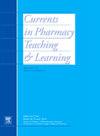Why choose pharmacy? A survey on factors influencing chinese high school students' choice of pharmacy major
IF 1.4
Q3 EDUCATION, SCIENTIFIC DISCIPLINES
引用次数: 0
Abstract
Background
Pharmacy plays an important role in healthcare.However, the trends regarding the number of scholars willing to contribute to the field of pharmacy remain unknown. High school students are at the initial stage of career decision-making. This survey focuses on their intention to enroll in pharmacy to explore the relevant influencing factors to support the development of the health industry.
Methods
In this cross-sectional study, we administered anonymous questionnaires to 9574 enrolled high school students across four Chinese provinces, obtaining 8050 valid responses (response rate: 84.1 %). The survey collected data on basic personal information, understanding of the pharmacy profession, and self-perception. We analyzed the data using chi-square tests and multivariate logistic regression to explore factors associated with enrollment intention in pharmacy majors.
Results
Among the surveyed students, 31.2 % (2515/8050) expressed interest in pharmacy, with higher proportions among females (33.8 %) than males (27.9 %) and among those with middle academic performance (17.1 %). Family or acquaintance recommendations were noted by 26.1 % of students as influencing their choice. Other observed patterns included: clear career plans (OR = 1.286, 95 % CI:1.127–1.468), participation in practical or scientific activities (OR = 1.223, 95 % CI:1.063–1.408), and employment prospects (OR = 2.119, 95 % CI:1.606–2.795). When evaluating the profession, with greater emphasis on societal contribution (18.2 %) compared to job stability, while 46.9 % reported limited awareness of professional risks.
Conclusion
Most high school students lacked a detailed understanding of the pharmacy profession and failed to consider the overall advantages and disadvantages, which might be the fundamental factor influencing the low enrollment rate in the pharmacy major.
为什么选择药剂学?影响我国高中生药学专业选择的因素调查
背景药学在医疗保健中扮演着重要的角色。然而,愿意为药学领域做出贡献的学者数量的趋势仍然未知。高中生正处于职业决策的初级阶段。本调查主要针对其入读药学的意向,探讨支持健康产业发展的相关影响因素。方法在横断面研究中,我们对中国4个省份的9574名在册高中生进行了匿名问卷调查,获得8050份有效问卷,回复率为84.1%。该调查收集了基本个人信息、对药学职业的了解和自我认知等数据。我们采用卡方检验和多因素logistic回归对数据进行分析,探讨影响药学专业学生入学意向的因素。结果31.2%(2515/8050)的受访学生表示对药学感兴趣,其中女生的比例(33.8%)高于男生(27.9%),学业成绩中等的学生比例(17.1%)高于女生。26.1%的学生认为家人或熟人的推荐会影响他们的选择。其他观察到的模式包括:明确的职业规划(OR = 1.286, 95% CI: 1.127-1.468),参与实践或科学活动(OR = 1.223, 95% CI: 1.063-1.408)和就业前景(OR = 2.119, 95% CI: 1.606-2.795)。在评估职业时,与工作稳定性相比,更强调社会贡献(18.2%),而46.9%的人表示对职业风险的认识有限。结论大多数高中生对药学专业缺乏详细的了解,没有考虑到药学专业的整体利弊,这可能是导致药学专业录取率低的根本原因。
本文章由计算机程序翻译,如有差异,请以英文原文为准。
求助全文
约1分钟内获得全文
求助全文
来源期刊

Currents in Pharmacy Teaching and Learning
EDUCATION, SCIENTIFIC DISCIPLINES-
CiteScore
2.10
自引率
16.70%
发文量
192
 求助内容:
求助内容: 应助结果提醒方式:
应助结果提醒方式:


